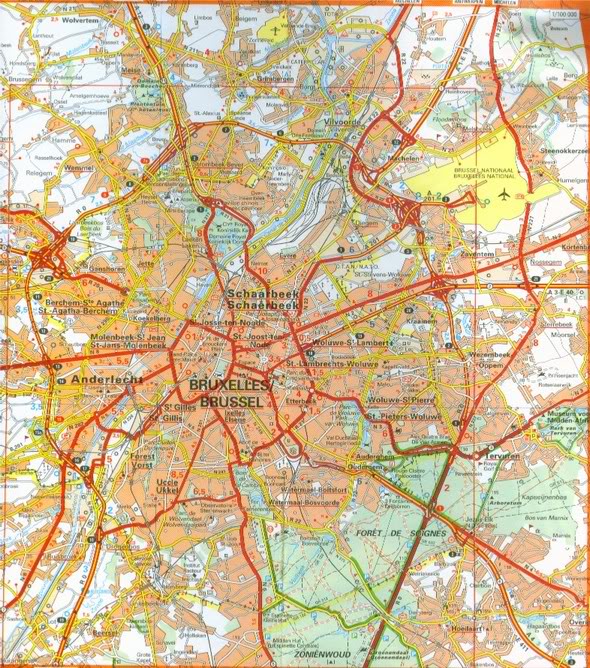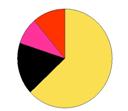|
|

|
|
Tervuren
the green, quaint and prosperous municipality just south-east of the
capital of
Europe :Brussels.
Yes it is
pretty. Yes it is upmarket. Yes it is safe. But where is it exactly
that you would want to be? Considering Tervuren
has various very different neighbourhoods. But what are the differences
and
characteristics precisely?
And where do
you find these neighbourhoods in Tervuren. If you plan to settle in
Tervuren,
taking into account your resources, lifestyle
and family situation, where would
you do best. And what is the cost of buying or renting a house. What
will be
the value of your real estate some years from now? How will the
development of
Tervuren play out in the near, and not so near, future? What are the
other options
for settling in Greater Brussels?
Tervuren as
we know it evolved from a modest settlement in the Middle Ages to a
significant
village and outpost for royalty and nobility. It’s location
on the left bank of
the river “ de Voer” assured fresh water, its
proximity to centers of power
like Ghent, Louvain, and Brussels assured a constant interest from its
rulers.
Add the sheer coincidence of the liking Leopold II developed for
Tervuren and
his pompous and megalomaniac character.
Hence the interesting and infamous
history of a village this size.
Tervuren is
located in the south east of the Greater Brussels agglomeration. This
has
always been the preferred area of settlement for nobility and early
suburbanites. South of the village
of Tervuren
you’ll find the Sonian Forest
(Zonienwoud in dutch, Foret
de Soignes
in french). A drop dead gorgeous forest that determines much of the
atmosphere
in many parts of Tervuren. It is a huge asset for Tervuren. East of the
centre
village, adjacent to the market square, there is the Park
of Tervuren. Around 400 years ago
archduchess Isabel
constructed this enclosed park. It contains hills, lakes, a river some
monumental buildings, it is sizable and most parts of the wall or still
there. One
of the monumental buildings is the glorious Africa Museum
(see picture above). To the west of the village one finds the fairways
of the
exclusive royal golfclub Ravenstein,
founded in 1906, designed by Seymour Dunn.
To the
north of the village centre is a built-up stretch with mainly older
villa’s
under even older trees from patches
of original forest.
Dunn
|

|
|
The
municipality of Tervuren
is relatively spread out and
consists of various different quarters. Each with its own
characteristics. We
will describe and classify all of these neighbourhoods.
An outstanding feature
of the village
of Tervuren
is that the historic
market square gives direct access to
an extensive green area with ponds, a river, and some historic
monuments . The Park of Tervuren
which extends into the Sonian Forest.
The centre
of the village started to expand seriously in the 19th
century. Most
buildings in this centre were constructed
at the end of the 19th century and the beginning
of the 20th. The grid of the middle ages was
followed, so
you will find a sometimes seemingly illogical and incomprehensible maze
of
charming streets that make up the core of the municipality of Tervuren.
Because
of
the fact that the development of Tervuren in the aforementioned period
was one
of an independent entity, there is a broad variation in housing to be
found. In
streets perpendicular to the Tervurenlaan there are the impressive
maisons and
hotels de maitre. Somewhat higher up in the village there are lots of
modest townhouses along the narrow streets. The
centre is
speckled with unexpected architectonic highlights.
|

|
|
The ideal
location of Tervuren within the region is its greatest asset.
South of
the village the one of the most beautiful forests of North-West Europe,
east of
it literally a majestic park, west of it the historic golfclub on the
grounds
of Ravenstein, and just a little bit further to the west the capital of
Europe.
In short a community wedged between forest and park in the shadow of Brussels.
The airport a fifteen minutes drive away and quick access to the Ring
(circumferential highway). There is a tramway that connects
Tervuren with Montgomery Square,
a major transport node in Brussels.
Most
Flemish towns and village are suffering of ribbon development. Tervuren
on the
contrary had a classical urban development with a
gradual expansion
of the urban area which resulted in a compact, attractive and balanced
urban
nucleus. After the second World War the centre of Tervuren was to be
surrounded
by well planned low density urban zonesTervuren instead has a
magnificent and
broad bypass: the Tervurenlaan. Most traffic is handled by this avenue
so it
isn't straining the capacity of the roads inside the village and keeps
up
livability in the centre.
|

|
|
The official
language of Tervuren is Dutch. Since Tervuren is part of the province Flemish
Brabant. While the language of the administration of the community of Tervuren
is unequivocally Dutch, and Dutch, as a mother tongue, still is spoken by a
majority of the population, the languages actually spoken in and around
Tervuren are many. You will be hearing of course French and English a lot, but
also German, Spanish, Polish, Italian, and Portugese. French has always been
the second language of Tervuren but English is well on its way to surpass the
language of Voltaire as the runner-up.
The influx of many
English speakers because of the presence of the British School and the selling
up of real estate in order to profit from the starkly increased home
values in Tervuren by scores of Belgians of whom a considerable number
are French speaking Belgians, are reasons for the rise of the relative
importance of English and the rise of the number of inhabitants of Tervuren
that are English speaking.
The fact that Dutch
speakers are still a , although fragile, majority, and the fact that there are many other
tongues spoken, but above all that the up and coming language,
English, is perceived by most as “neutral” and not a threat, adds to the relative
communitarian quietness. A quietness difficult to find elsewhere in other Brussels
suburbs.
In a prosperous
community like Tervuren tensions between groups with different linguistic
origins might not attain the same levels as in communities with a population
with a lower mean income per capita and a higher unemployment rate ,however there
always is a danger for a municipality with a significant minority of a
certain linguistic group to become a bargaining chip in national politics.
About 42 % of young families with children do have Dutch as a home language
(2009), young families with children that are using English as home
language in Tervuren is nearing 20 %. For the coming years it looks that the rise
of English and other languages is inevitable. For the moment this
development doesn't translate politically yet since foreigners tend not to
participate in municipal elections(yet). But some political
organistations have started to court agressively those without Belgian
passports, but with communal voting rights, within Tervuren.
This changing
language balance in the municipality of Tervuren might, just might, be all changing in
a different direction if well-heeled Dutch speaking Belgians with high paid
jobs in Brussels start to discover living close to the capital in an attractive
environment, limiting their commuting hours, thus avoiding ever
increasing traffic jams, and at the same time buying into a sophisticated,
green, and safe community. Or there might be an influx of
comfortable retirees who are looking for proximity to all the cultural
amenities of Brussels.
All this comes at a premium, but the increasing openess of the Flemish society
and the realization of the importance of location, could lead to the conclusion
for a sizable group that it will be well worth the extra money to establish
themselves in the eastern and southern suburbs of Brussels.
So
far though the high numbers of Dutch speaking Belgians that are
leaving Tervuren are not compensated by the influx of Dutch
speakers from the Netherlands. The numbers of French speaking
Belgians relative to Dutch speakers are creeping up. And it
remains to be seen what the integrating power of the Dutch
Community is, to avoid a very serious shift in the Tervuren
political balance. Voting international migrants are likely to
decide that balance in the near future. Dutch speaking parties, in
power for ages, are seriously inward looking and disadvantaged compared
with the agressively marketing and foreigner-friendly French speakers
parties. One that would surely have grave political
consequences at the national level. It could lift Tervuren
to the forefront of the ugly national political struggle.
Which might have an impact on the real estate market.
|
 |
| The
internationalisation of Tervuren really started taking off in the
eighties when many eurocrats and expats discovered the green
and
lush environments of Tervuren. Still incredibly cheap by then. Close
to Brussels, in a gorgeous setting and important and good schools in
the vicinity. After this wave of fonctionnaires and official
expats, the entrepreneurs and adventurers came in, many of them
foreigners, attracted by the , according to international standards, low real estate prices, high
quality
of living and an expanding services market
which
created possibilities. Belgians are packing up and
relocating to cheaper parts of the country . This is an ongoing
process. |
|
|



 RER Reseau RER Reseau

Flightpaths
|




 RER Reseau
RER Reseau 








